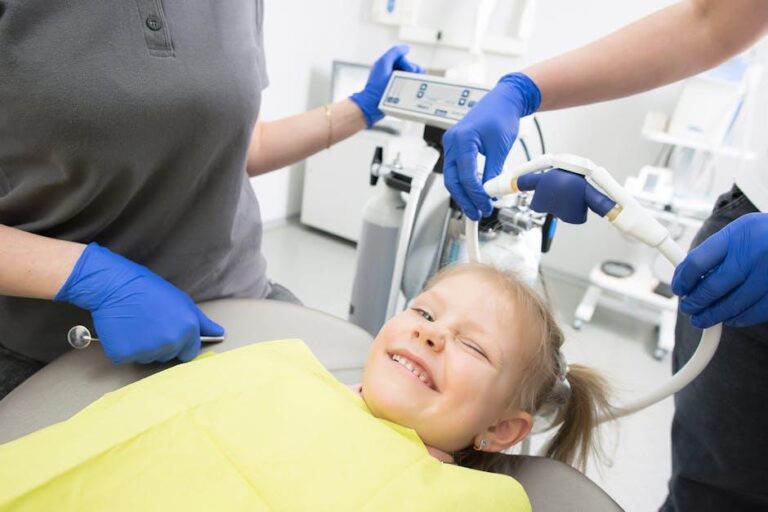1 in 3 Kids Has Dental Problems, Poll Finds – U.S. News & World Report
According to a concerning new poll spotlighted by U.S. News & World Report, approximately one in three children in the United States currently suffers from dental problems. This staggering statistic sheds light on an often overlooked but critical aspect of children’s health — their oral health. Dental issues in kids can have long-lasting effects on their overall wellbeing, academic performance, and quality of life.
Understanding the Poll and Its Implications
The poll surveyed thousands of parents and caregivers across the country, revealing that:
- Approximately 33% of children reported some form of dental issue.
- The most common problems included tooth decay, cavities, gum disease, and oral infections.
- Many parents recognized the importance of dental care but faced barriers such as cost or lack of access to pediatric dentists.
Why Are Dental Problems So Prevalent Among Children?
Several factors contribute to this high prevalence of dental issues in children:
- Poor dietary habits: High consumption of sugary and acidic foods and drinks increases cavity risk.
- Inadequate oral hygiene: Many kids do not brush or floss properly or regularly.
- Limited access to dental care: Economic and geographic barriers prevent timely visits to dentists.
- Lack of awareness: Some parents may underestimate the importance of pediatric dental care in early years.
Key Statistics from the Poll
| Dental Issue | Percentage of Children Affected |
|---|---|
| Tooth Decay / Cavities | 24% |
| Gum Disease (Gingivitis) | 8% |
| Tooth Pain or Infection | 10% |
| Missing or Damaged Teeth | 6% |
The Importance of Early Pediatric Dental Care
Dental problems in childhood are not just about teeth—they can significantly affect nutrition, speech development, and self-esteem. Early intervention is vital for:
- Preventing cavities and infections through regular dental cleanings and check-ups.
- Building good oral habits that last a lifetime.
- Monitoring development to identify any orthodontic or structural concerns early.
- Educating families about nutrition and oral hygiene best practices.
When Should You Start Taking Your Child to the Dentist?
Experts recommend that a child’s first dental visit should happen by their first birthday or within six months after their first tooth erupts. Early dental visits help familiarize your child with dental environments, making future visits less stressful and more effective.
Practical Tips to Prevent Dental Problems in Kids
Preventing dental problems requires a combination of good habits and regular professional care. Here are proven tips for parents and caregivers:
- Encourage proper brushing: Teach children to brush twice daily using fluoride toothpaste.
- Floss regularly: Start flossing as soon as two teeth touch to prevent plaque build-up.
- Limit sugary snacks and drinks: Reduce intake of candy, sodas, and fruit juices.
- Schedule routine dental visits: Aim for twice-yearly check-ups and cleanings.
- Use mouthguards: Protect teeth during sports activities.
- Lead by example: Kids who see their parents practicing good oral hygiene are more likely to adopt these habits.
Case Study: The Impact of Early Dental Intervention
Emma’s Story: Emma, a six-year-old from Ohio, was identified early as having early signs of tooth decay. Thanks to prompt dental care and lifestyle changes reinforced at home, Emma’s dental health dramatically improved over two years. Regular counseling on nutrition and frequent dental cleanings eliminated further decay and taught her family healthier habits. Emma now enjoys a cavity-free smile and shows enthusiasm during dental visits.
Addressing Barriers to Children’s Dental Care
The poll also highlighted systemic challenges many families face:
- Cost of dental treatment: Dental checkups and treatments can be expensive without insurance.
- Access to specialists: Pediatric dentists are not evenly distributed, especially in rural areas.
- Fear and anxiety: Both children and parents may avoid dental visits due to fear.
Policymakers and healthcare providers must work together to improve insurance coverage, increase public awareness, and expand access to pediatric dental services. Community programs and school-based dental screenings can also play a vital role in reaching underserved populations.
Conclusion: Prioritize Your Child’s Dental Health Today
The recent poll’s findings that 1 in 3 kids suffers from dental problems in the U.S. serve as a wake-up call for parents, caregivers, and health advocates alike. Strong pediatric dental care habits create the foundation for a lifetime of healthy smiles and wellbeing. By prioritizing regular dental visits, maintaining proper oral hygiene, and fostering a tooth-friendly diet, families can significantly reduce the risk of dental disease.
Remember, early prevention is key! Don’t wait for symptoms to appear — act today to secure your child’s bright and healthy smile for years to come.


